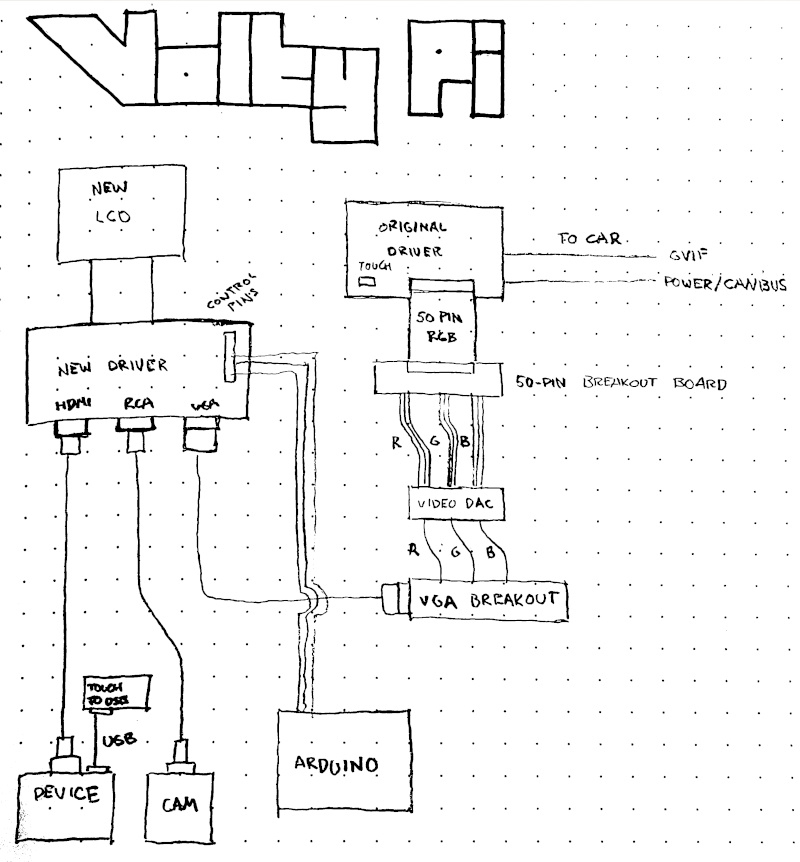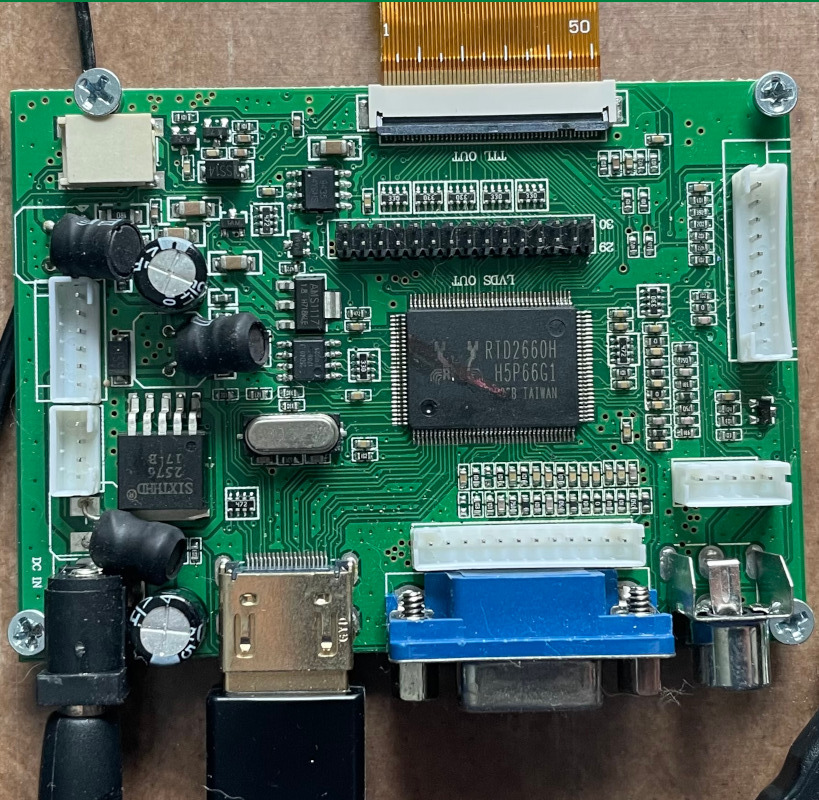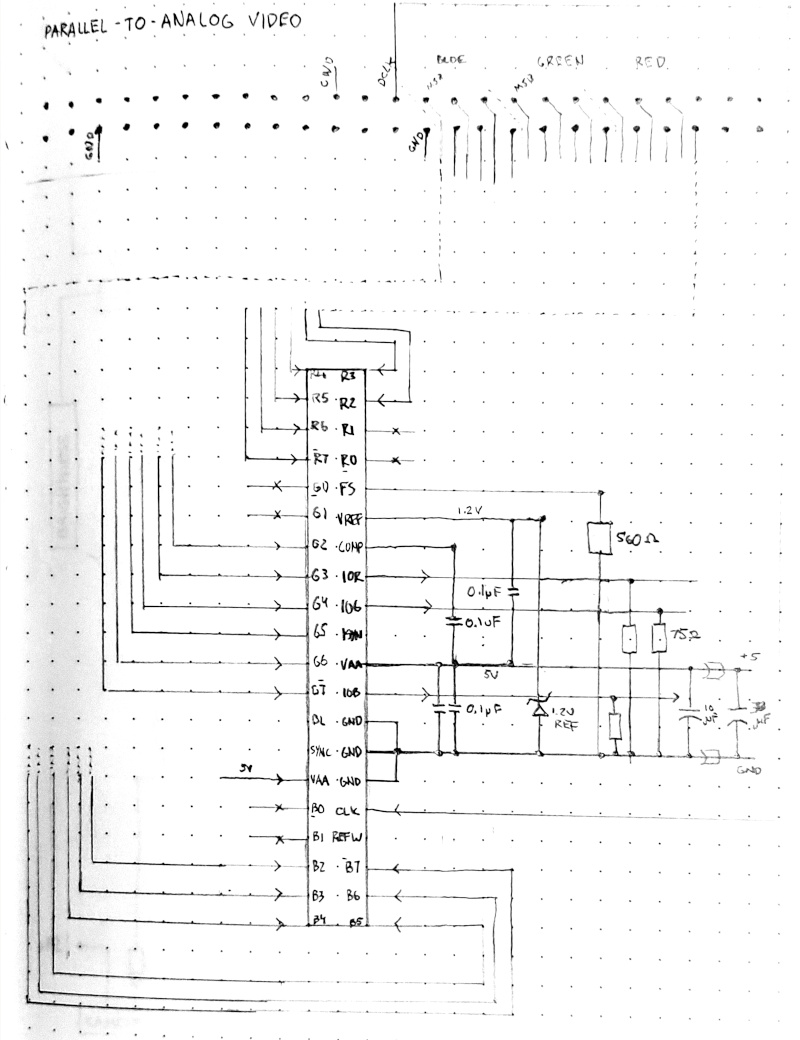Volty Pi - more ideas
A few more ideas on integrating a carputer into my Chevy Volt.
Volty Pi project
Thank you all who expressed an interest in it. I decided to shelf the Volty Pi project. I kept coming back to it time to time, but ultimately, I was not able to properly power and run the LCD driver board, and did not feel comfortable experimenting on the car directly. I am working on a similar, but less intrusive, project right now. Meanwhile, here are some other thoughts and ideas in connecting to the Volt's console LCD.
Also see the next, less-invasive project:
Volty MIR - OverviewVolty MIR - Android automation
Volty MIR - Installing the rear camera
Switching the inputs
The original idea involved switching ~20 pins on the LCD's parallel interface to switch inputs. This could be done a few ways:
1. The hardware way
Use an old-school KVM switch with a rotary selector. Lots of wires, lots of soldering, kind of messy.
2. The digital way
Use IC bus switches, for example, 5C3244P. My idea was to stack several protoboards (one per input) and digitally enable only one of the inputs. Allows for more customization and control.
Cables
Instead of using flimsy flat ribbon cables, use 50-pin IDC ribbons from old PCs. You'll still need short ribbons to connect to the LCD driver, but the rest can be a bit more durable.
Upgrading the LCD while retaining functionality
A different idea that might be worth revisiting.

Remove the original LCD entirely, and add a new, larger, and higher-resolution 3:4 LCD with a resistive touchscreen. Fit the new panel on the front of the console, covering the empty spot where the old LCD was.
Find an LCD driver with HDMI, VGA, and composite video inputs.

This will allow you to connect:
- Raspberry Pi or a smartphone (via dock or MHL) on HDMI
- Reverse camera on composite video
- Original Volt infoscreen on VGA (see below)
The inputs can be switched:
- Via a control board (usually comes with LCD driver) by pushing a button
- Using an Arduino to ground the corresponding control pins (upper right on the photo above) to the ground. This allows for some automation, such as switching to a reverse camera when shifting into R (if your Volt does not have this already)
Retaining the original infoscreen functionality
To connect the original Volt infoscreen to the new display, it might be possible to use a Video DAC (digital-to-analog) converter, such as ADV7120KN50. The IC takes parallel RGB signals (in this case, 6 bits per channel from the LCD connector) and outputs three analog channels, a standard VGA signal.
The point of this is to avoid trying to switch parallel interfaces, and instead, to have a standard signal that can be switched by the driver.
This is an unfinished and untested diagram:
